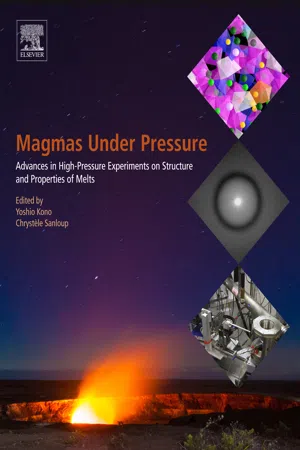
Magmas Under Pressure
Advances in High-Pressure Experiments on Structure and Properties of Melts
- 514 pages
- English
- ePUB (mobile friendly)
- Available on iOS & Android
Magmas Under Pressure
Advances in High-Pressure Experiments on Structure and Properties of Melts
About This Book
Magmas under Pressure: Advances in High-Pressure Experiments on Structure and Properties of Melts summarizes recent advances in experimental technologies for studying magmas at high pressures. In the past decade, new developments in high-pressure experiments, particularly with synchrotron X-ray techniques, have advanced the study of magmas under pressure. These new experiments have revealed significant changes of structure and physical properties of magmas under pressure, which significantly improves our understanding of the behavior of magmas in the earth's interior.
This book is an important reference, not only in the earth and planetary sciences, but also in other scientific fields, such as physics, chemistry, material sciences, engineering and in industrial applications, such as glass formation and metallurgical processing.
- Includes research and examples of high-pressure technologies for studying the structure and properties of magma
- Summarizes the current knowledge on the structure and properties of high-pressure magma
- Highlights the importance of magma in understanding the evolution of the earth's interior
Frequently asked questions
Information
Primary Melt Compositions in the Earth's Mantle
Abstract
Keywords
1. Introduction
Table of contents
- Cover image
- Title page
- Table of Contents
- Copyright
- List of Contributors
- Preface
- Part 1. Magmas in the Earth's Interior
- Part 2. Advances in Experimental Studies of Melts at High Pressures
- Part 3. Current Knowledge on Structure and Properties of Magmas Under Pressure
- Author Index
- Subject Index